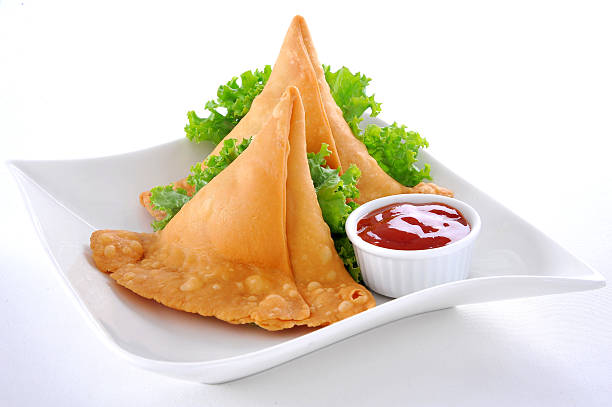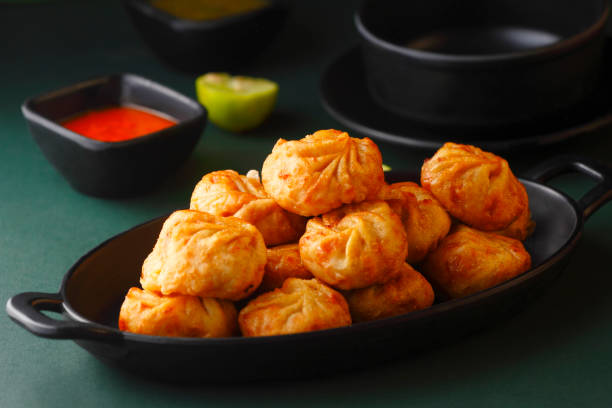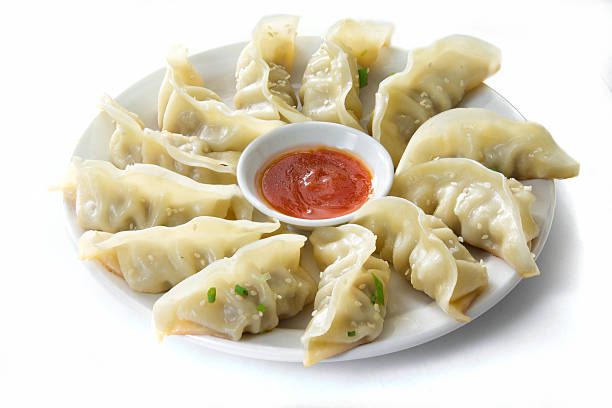Introduction – The Great Street Food Debate
Street food is the heart of Indian and Asian culture, and when it comes to popularity, chicken momos and samosas often top the list. Both snacks are delicious, affordable, and easily available at every corner, from roadside stalls to high-end cafés. But in today’s health-conscious world, people are asking an important question: which one is healthier? Momos with their soft, steamed dumpling style, or samosas with their crispy, fried crust? While taste preferences may vary, looking at nutrition, calories, and health effects can help us make the right choice. In this article, we’ll break down the nutritional value, calorie count, pros and cons, and expert views on both momos and samosas so that you can decide guilt-free the next time hunger strikes
Nutritional Profile of Chicken Momos
Chicken momos are usually made with refined flour dough stuffed with minced chicken, onions, and light spices. A single steamed chicken momo contains around 35–45 calories, which is relatively low compared to fried snacks. The chicken filling provides protein that supports muscle repair and growth. Since momos are often steamed rather than fried, they do not absorb excess oil, making them lighter on the stomach. However, if you choose fried momos, the calorie content increases drastically, going up to 80–100 calories per piece. The downside of momos is that the dough is mostly made from refined flour (maida), which offers little fiber and can spike blood sugar. Still, as far as protein and low oil content go, momos win points over samosas

Nutritional Profile of Samosa
The traditional samosa is a triangular pastry stuffed with spiced potatoes, peas, and sometimes meat. One medium-sized samosa contains around 120–150 calories, depending on size and preparation. Unlike momos, samosas are deep-fried, which increases their oil content and makes them calorie-dense. They are rich in carbohydrates due to the potato filling, which can cause spikes in blood sugar. On the positive side, samosas often include spices like cumin, coriander, and green chilies, which have antioxidant benefits. However, the combination of refined flour crust and deep-frying makes them a heavier snack. For those watching their weight, eating samosas frequently can lead to unhealthy fat accumulation, making them a less favorable option compared to steamed chicken momos
Calories & Weight Management – Momo v/s. Samosa
If weight management is your priority, calories are the first factor to consider. On average, 5 steamed chicken momos = 200–250 calories, while 2 medium samosas = 300–350 calories. That means momos are lighter and can be enjoyed in slightly larger portions without exceeding daily calorie limits. Samosas, being deep-fried, also contain trans fats, which not only increase calorie load but may also harm heart health. Moreover, momos provide lean protein from chicken, while samosas are carb-heavy with limited protein. For gym-goers or those trying to lose weight, steamed momos are the smarter choice. But if you’re indulging occasionally, a samosa once in a while won’t hurt – the key is moderation
Digestibility and Stomach Health
Another important factor is digestibility. Steamed chicken momos are generally easier on the stomach since they are less greasy and protein-rich. They don’t cause as much acidity or bloating unless you consume them with too much spicy chutney. Samosas, on the other hand, being fried and oily, can often lead to indigestion, heaviness, and acid reflux if eaten in excess. The potato filling is also high in starch, which takes longer to digest. For people with sensitive digestion, diabetes, or heart problems, momos are a safer snack compared to samosas. However, hygiene is equally important – street momos often come with chutneys that may not be prepared safely, so always check the cleanliness of the stall before eating
Protein vs. Carbohydrates Battle
One of the biggest differences between chicken momos and samosas lies in macronutrients. Momos provide protein from chicken, which supports muscles, bones, and overall strength. Samosas, on the other hand, are dominated by carbohydrates from potatoes and flour, which provide quick energy but little nutrition. High-carb foods without protein can lead to sudden hunger pangs and overeating. Protein-rich snacks like momos keep you fuller for longer, making them a healthier option for weight loss and fitness. Unless the samosa is made with a non-potato filling like paneer or chicken, it falls behind in terms of nutrition. So, if you’re looking for a balanced snack that fits into a healthy lifestyle, momos are the better bet

Oil and Fat Content – The Real Game Changer
The biggest health difference between the two is the oil factor. Chicken momos, when steamed, are almost oil-free, making them a guilt-free snack. Fried momos, however, become just as unhealthy as samosas due to excess oil absorption. Samosas are always fried, which makes them crispy and delicious but also high in saturated and trans fats. Regular consumption of such fried snacks is linked to obesity, high cholesterol, and heart disease. Even reheating samosas in oil can increase harmful fat content. From a health perspective, steamed momos win by a large margin, but if you prefer fried foods, both samosas and fried momos fall into the “occasional indulgence” category
Taste & Popularity Factor
Taste is subjective, and this is where samosas often win hearts. The crispy, golden-brown crust and spicy potato filling make samosas one of the most popular Indian snacks worldwide. Momos, however, especially chicken momos, are gaining massive popularity in urban India and among youth, thanks to their lightness and variety (fried, tandoori, gravy, etc.). While samosas are associated with chai-time snacks and festivals, momos are seen as a trendy street food. Both have unique fan bases, but from a health and modern lifestyle perspective, momos fit better into the picture. Still, if taste is your only priority, many people would never say no to a hot, crispy samosa
Expert Opinions – What Nutritionists Say
Most nutritionists agree that steamed chicken momos are healthier than samosas. The protein from chicken and the lower calorie content make them suitable for regular consumption in moderation. On the other hand, samosas, due to their deep-fried nature, should be treated as an occasional indulgence. Nutritionists also warn about street-side chutneys that come with momos, which can sometimes be unhygienic and add unnecessary calories due to excessive oil and sugar. Experts recommend that if you must eat samosas, try baking them instead of frying. Similarly, for momos, whole wheat flour can be used instead of refined flour to make them even healthier
Final Verdict – Which One Should You Choose
When it comes to Chicken Momos vs. Samosa, the answer depends on your priorities. If you’re looking for a lighter, protein-rich, and more fitness-friendly option, steamed chicken momos clearly take the lead. But if you’re craving comfort food, crispy samosas are unbeatable in taste and nostalgia. Health-wise, samosas should be occasional, while momos can be a part of your diet more often, especially if steamed and paired with a healthy dip. Ultimately, balance and moderation are key. Instead of giving up one completely, enjoy both occasionally, but let momos be your go-to option when you want a healthier street food snack
Disclaimer
The tips and suggestions mentioned in this article are intended for general informational purposes only. Before starting any fitness program, making changes to your diet, or trying any remedies related to health conditions, please consult your doctor or a qualified healthcare professional. Dr. You does not verify or endorse the authenticity of any such claims made herein

